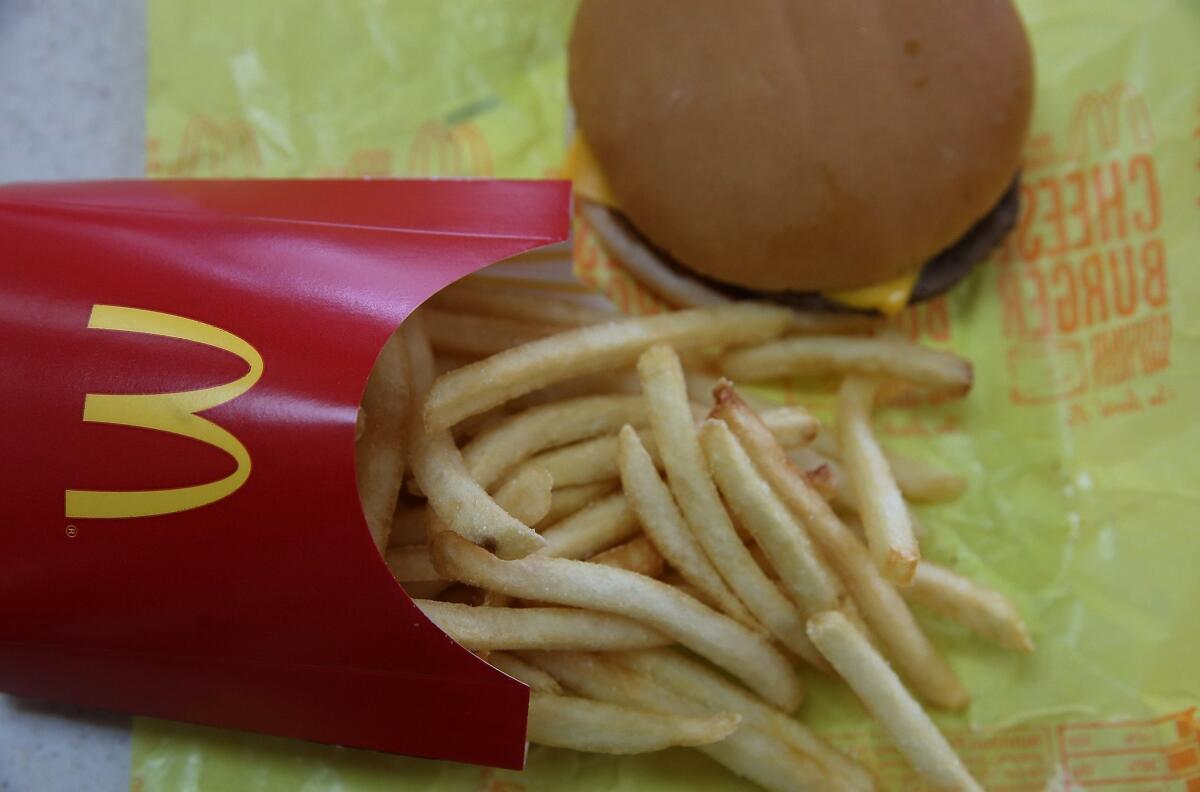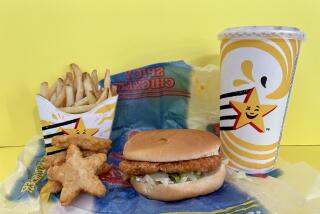Think fast food is getting more healthful? Um, no.

Popular fast-food chains have engaged in plenty of publicity over the last decade or so about their more healthful menu options (such as McDonald’s “Favorites Under 400”. Two new reports, however, show that the portion size, calorie count and sodium content of the most popular menu items at three major fast-food chains basically haven’t changed since 1996 — back when President Bill Clinton could eat a Big Mac faster than you could say “Lewinsky.” (Clinton now reportedly eats a mostly vegan diet.)
Researchers at the USDA Human Nutrition Research Center on Aging at Boston’s Tufts University analyzed the calorie, sodium, saturated fat and trans fat content of popular menu items served at three unnamed national fast-food chains between 1996 and 2013.
“Our analysis indicates relative consistency in the quantities of calories, saturated fat and sodium,” said lead researcher Alice H. Lichtenstein, director of the Cardiovascular Nutrition Laboratory at the USDA center at Tufts. “However, the variability among chains is considerable and the levels are high for most of the individual menu items assessed, particularly for items frequently sold together as a meal, pushing the limits of what we should be eating to maintain a healthy weight and sodium intake.
“For example, among the three chains, calories in a large cheeseburger meal, with fries and a regular cola beverage, ranged from 1,144 to 1,757 over the years and among restaurants, representing 57% to 88% out of the approximately 2,000 calories most people should eat per day,” Lichtenstein continued. “That does not leave much wiggle room for the rest of the day.” (Or in one’s jeans.)
Lichtenstein and her colleagues focused on the four most popular menu items: fries, cheeseburgers, grilled chicken sandwiches and regular cola, looking for trends in portion size and nutrient content over the 18-year period. In all, they examined 27 items including small, medium and large fries and cola beverages and 2-ounce and 4-ounce cheeseburgers.
They found only small fluctuations in calorie content and the amounts of saturated fat and sodium. The one exception was fries, which decreased first in saturated fat in 2001 and then trans fat. The researchers link the decline in trans fat between 2005 and 2009 to legislative efforts (California became the first state to ban the use of trans fat in 2008).
The Tufts researchers say that fast-food sales remain strong, “contributing to our epidemic of obesity and hypertension.” They recommend that the chains gradually cut the amount of sodium and use leaner cuts of meat and reduced-fat cheese in their main menu items.
The studies’ authors also note that nutrient content can vary widely among similar items from different chains. For example, an order of small fries could differ by as much as 110 calories and 320 milligrams of sodium from chain to chain — so consumers should read that new nutritional information that is posted on menus. “A 100-calorie difference per day can mean about a 10-pound weight change per year,” Lichtenstein said.
The studies were published Dec. 31 in Preventing Chronic Disease, a journal of the Centers for Disease Control and Prevention, ruining the post-New Year’s Eve hangover plans of many.
More to Read
Eat your way across L.A.
Get our weekly Tasting Notes newsletter for reviews, news and more.
You may occasionally receive promotional content from the Los Angeles Times.










